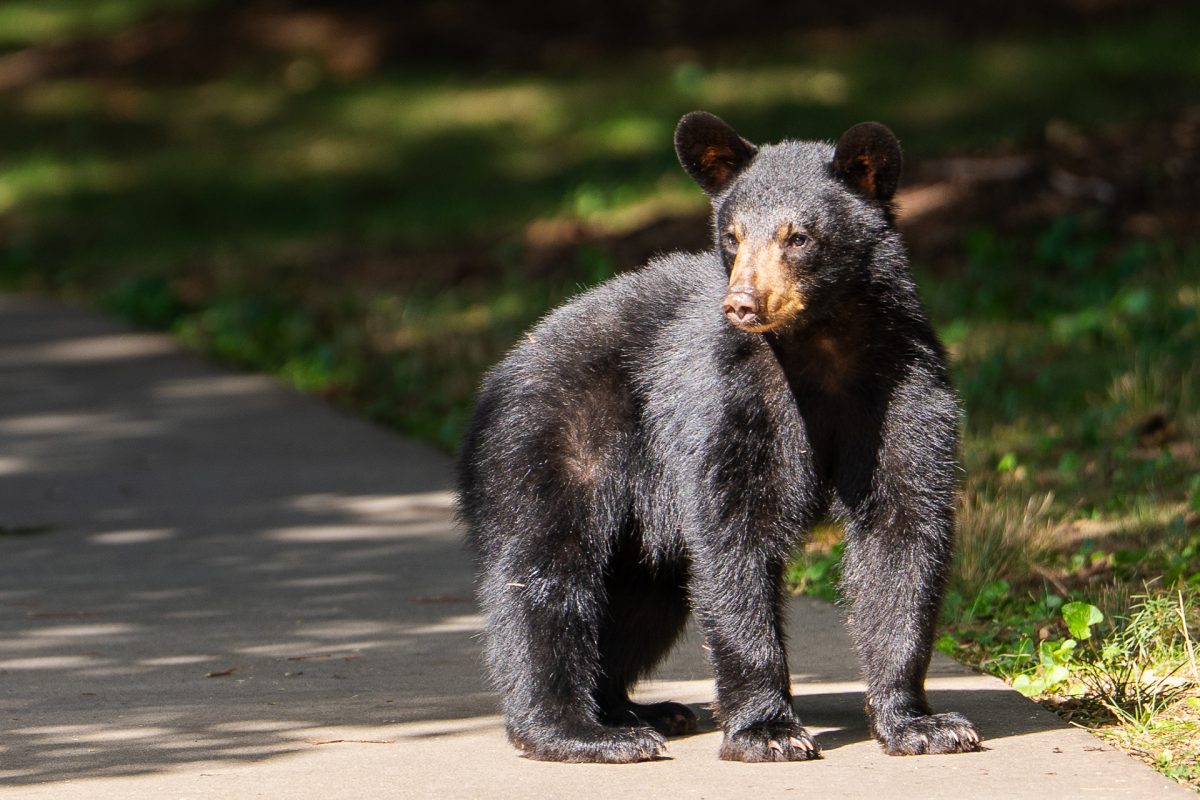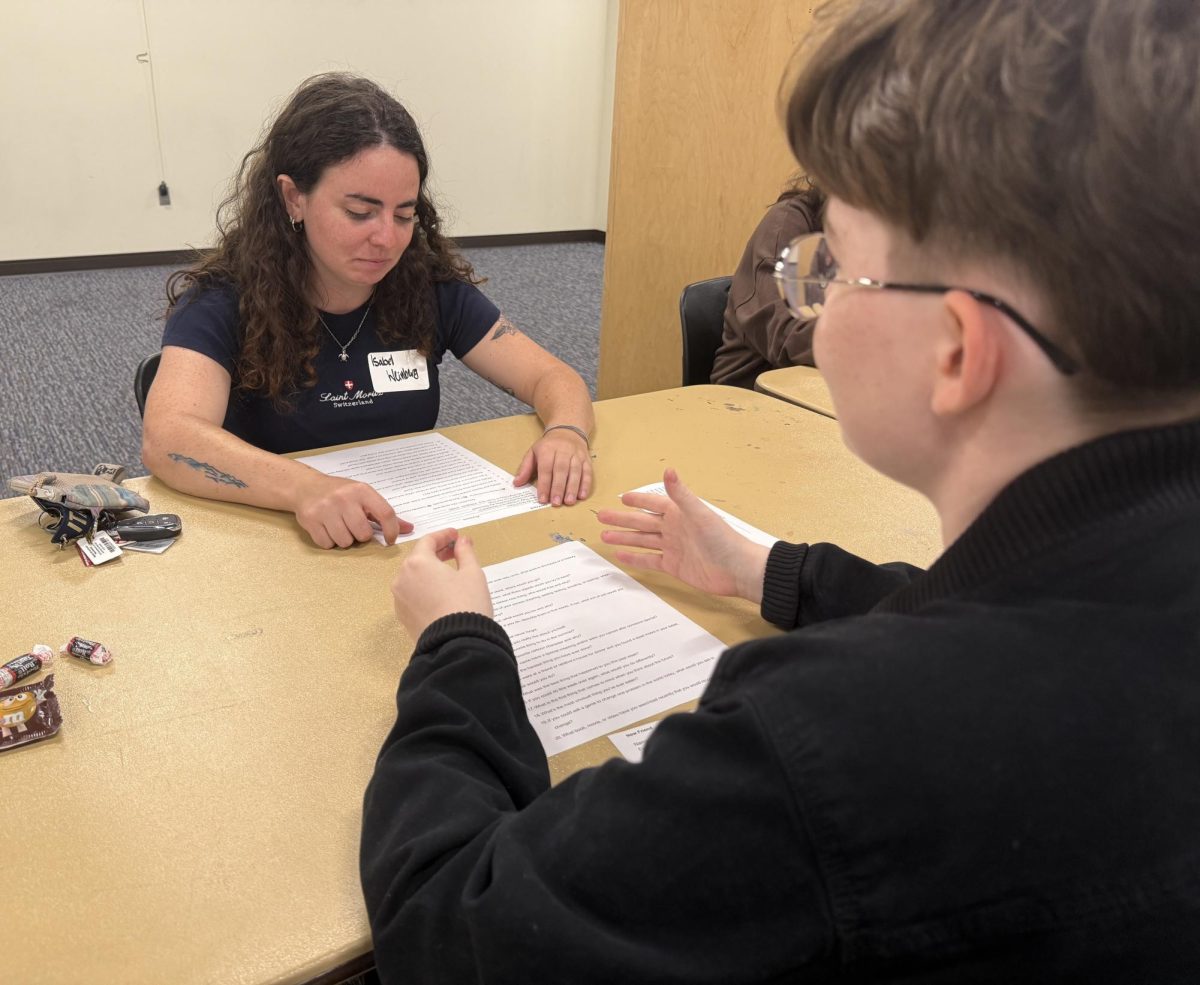Madelyn DePodesta
Arts & Features Staff Writer
[email protected]
UNC Asheville’s theater department expands their repertoire this semester by performing a unique play adaptation of H.G. Wells’ War of the Worlds.
Directed by Kirstin Leigh Daniel, the play takes place in a radio station in 1938. The in-the-round theater at UNCA resembles a radio station

from that era, including period microphones and instruments.
“The setting itself is unique. I can’t think of any other shows that have been done here that take place in a radio station,” said UNCA junior Tori Isenhour, who plays field reporter Phillips. “We don’t leave the stage until the very end, so you never leave character.”
War of the Worlds is different from most productions because it can be considered a play within a play, as it was originally performed as a radio play. The radio play itself follows the story of what would happen if aliens invaded Earth and how reporters and journalists would respond to the situation.
War of the Worlds broadcast remains one of the biggest mix-ups of all time. When being performed live on the radio in 1938, some listeners were not aware that the play was a dramatized fiction and believed such events were actually happening.
“I’m actually really lucky I get to be one of the most expressive characters because I am a field reporter on the scene of all the alien stuff that is happening,” Isenhour said. “But I relate to my character a lot, because he is very interested in everything that is going on and gets to experience it firsthand.”
Even though the actors perform the show as a radio show, they remain in character throughout the entire performance. In order to fully enhance the setting of the radio station, some actors get to work with a Foley table, which contains a variety of objects used to provide sound effects for the play.
“For the entirety of the production, they create their own sound with the Foley table,” Isenhour said. “For example, the secretary of the interior is being interviewed and they have umbrellas and they’re sliding them open to make a photo noise.”
The War of the Worlds also makes a point to add an on air sign and live instruments on stage, to help convey the idea of a live radio show to the audience.
UNCA junior computer science student Marcus Christensen plays both piano and bass guitar in the show, with The War of the Worlds being the first play in which he has ever performed.
“The musicians are also actors in the show, we are pretending to be there in the radio studio playing live music,” Christensen said. “Our goal is to bring people back to a time period, 1938, where things are so very different from what they are today. Everything we are doing is period and we are trying to transport people in a way.”
While radio shows are typically no longer the primary method for receiving breaking news anymore, events from the play parallel those of modern times.
“The best connection to modern times with this show is false information through media,” Christensen said. “What happened with this in real life, although it was broadcast as ‘hey, this is just a story — don’t worry about it,’ a lot of people completely missed that, there were probably several thousand if not a million people who thought this was actually happening and we were all gonna die. It happens a lot with modern media, where somebody says something about ‘this dude’s leaving the government,’ and people just believe it without trying to figure out if it’s real first.”
The play takes an unexpected turn toward the end, where the actors quickly deconstruct the radio station leaving the stage completely empty. In this part of the show, one of the characters roams the stage after the supposed alien invasion and it is unclear to the audience whether this event is a part of the play within a play or not.
Lighting and fog set the eerie tone of the scene and are used similarly throughout the rest of the show.
Sophomore drama student Rae Williams gets to have her first experience operating the light board for War of the Worlds.
“Tech is my general thing, I’m not much of a performance person,” Williams said. “I was here when the designer was putting a lot of her cues in. She was explaining how to do some things to me, so that was pretty cool to learn. I’ve had a pretty good first experience with it. The lighting is really cool, you just have to see it. I can’t explain it.”
While the technical elements of the show help set it apart from other performances, the diversity in age of the cast is also unique to the theater department.
“One of the biggest things is that we have a very diverse cast this semester. We have a professor doing it and all of the actors are very wide-ranged,” Williams said. “The sound is really cool and the lighting designer put in a lot of hard work. It’s beautiful to see, even though it’s a radio show.”
UNCA’s theater department’s willingness to try different styles and forms of theater ensures that every show is enjoyable not only for the audience, but for the actors as well.
“It’s been extremely stressful, but one of the funnest experiences of my life,” Christensen said. “The people I’ve met are really what made this.”


![Brooke Pedersen [second from the right] and Luis Reyes [right] hold banners during the Wrap The Woods event.](https://thebluebanner.net/wp-content/uploads/2025/09/ELIZABETH_PRITCHITT_IMG_3470-1200x804.jpg)























